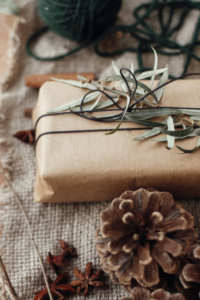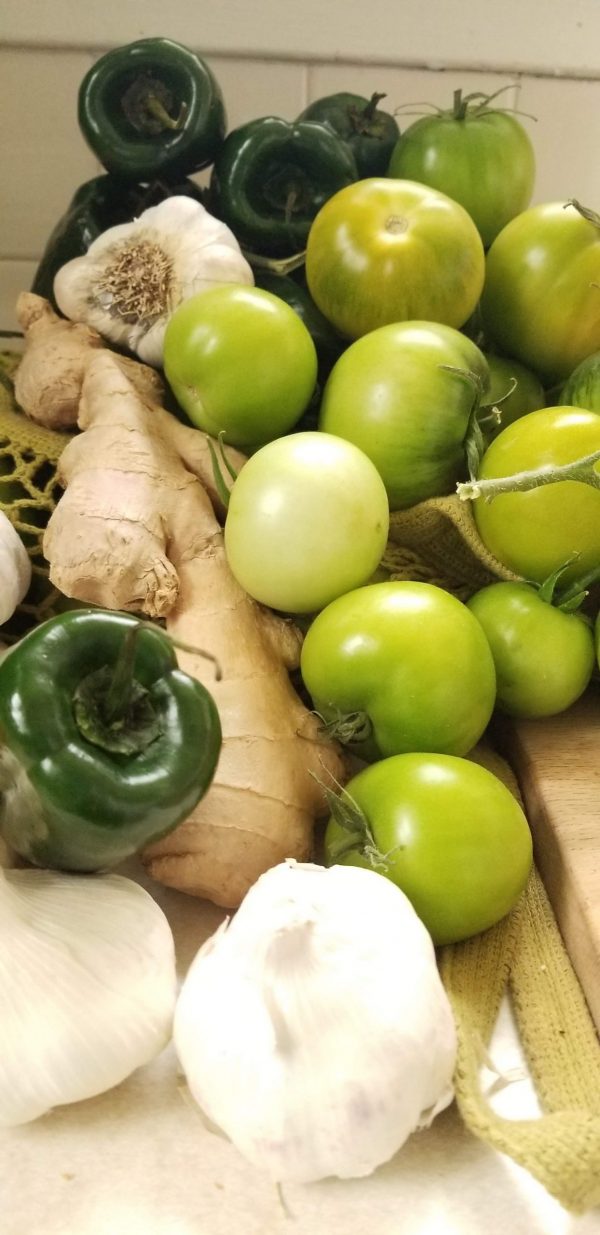
Making fermented Chokecherry Juice
I love plants. I love them so much it makes my heart ache. In the winter time, I enjoy the heck out of riding around in the snow as much as I can to pass the months. This makes for some fun in the forest until it is time to be with the plants again. When those spring smells start to show in the air the forest calls to me every day. It makes me want to run, no, I want to SPRINT to it as fast as I can.
Every time I hear the wind rustling through the needles my herbalist soul jumps with a joy. This joy is one that I have longed for my whole life. With the warm weather we had this year in February, I got the bug to do some digging, and harvesting in the soil. It was was softening a bit early in Washington, so I went…
That Wyoming Wind
Lately I have been peeling the resin off my fingers from harvesting Poplar Buds in the FREEZING cold. As the winter time is when the resin is surrounding the buds of the poplar trees at its height. The resin encases the little buds protecting them from falling off in the frigid temperatures.
In the spring time, they will pop so fast. We hardly realize the equinox has come then we see the fuzz floating in the air showing summer is soon up ahead. These poplar bud days are spent gathering buds here and there. Jumping up and down to get the circulation going, then getting back in the truck to warm up on the heater. Two weeks ago, I was in Wapiti, WY. Getting going for the harvest before the sunshine was up over the mountains.
Once the light hit the valley, the thermal energies woke the wind up, and man, out there in Yellowstone Country, in January, the wind cuts right through my quilted bibs, and base layer like I were naked… So, my fingers require a break on the heater in the truck here and there. And the early morning time makes for the right time before that sun peaks.
Early Spring Harvest
This weekend I was thrilled to go out in the sunny sunshine in Washington. The ground was so soft, and warm. The pines were smelling of spring as the whole forest started to wake up from its slumbering winter cold. I thought that I was only after some Balsam Root. This time of year is perfect for the harvesting of this rich resinous root.
As the ground warms up, the roots of the perennials start to stir as well. The moisture from the soil into seeps into their fibers and the resin starts to flow. This energy will push up and to the light and we will have our gorgeous, smiling, Aarow Leaf Balsam Flowers floating over the western hills.
Tucked in the sage brush, sprinkled in the alder groves, and on my lucky day yesterday, surrounding a sweet colony of Choke Cherry. I could smell the Sweet Almond scent downhill and felt the calling to come closer. When I saw them, they were glistening in the sunshine which was warm on my back. I set my pack down as I could feel that I would be there a while.
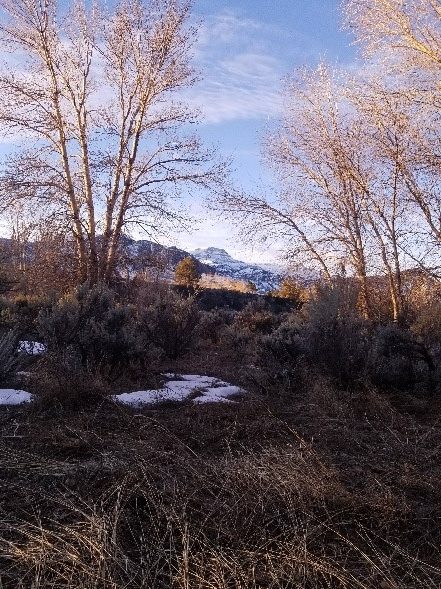
Tree Wisdom
Again, before any sort of harvest time, I always check in on the health and vitality of of the grove of plants. The roses that were surrounding this grove were a brilliant red. The Balsam covered the ground surrounding them. And the buds of the choke cherry were softening up. They tasted strongly of that almond flavoring, and I asked for their guidance in the best way to harvest.
When I turned around I nearly fell over a fallen Cherry Tree with in the grove. There was my answer, and I gave thanks to the blessings of a wind storm. It was still fresh and thriving with life in the buds, so I examined further with my knife and found the glorious amaretto scent was released. Again, I gave thanks to the forest for this offering of medicine to my family, and community.
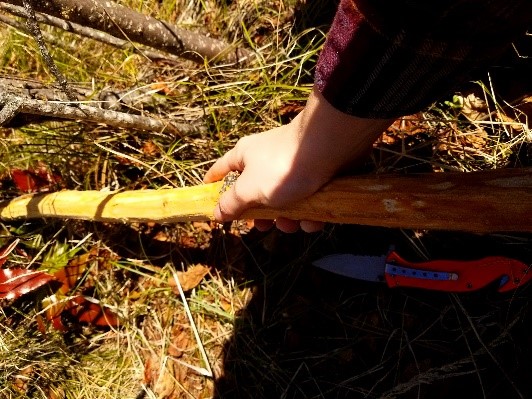
Sustainable Harvesting
The tree was busted right at the ground. So I dismantled it from the grove so that my harvesting would not affect any of the other trees poorly. As I was getting the tree away, I found two more branches that were freshly fallen, so I clipped them as well. Their bark was still vibrant and teaming with healing energies that are a part of this lovely tree.
So, I sat in the sun with my knife and stripped the bark. Taking every bud along with it and leaving only stripped sticks. I only take what I am going to use and leave the rest. Never leaving a half-stripped tree on the ground. Not only that it doesn’t feel right, but it wastes the life force of the plant that so slowly grew for our benefit.
I managed to gather nearly 2 pounds of bark from this one tree and couple of branches. Leaving the bare trunk behind for decomposition of the forest. When I have a farm stead, I intend to use even more of the plants that I use in the forest. I see garden fences made from the stripped trees that I harvest, and compost of dead leaves.

Harvesting From Tradition
This process is delicate. It is sacred and is a part of a tradition that has nearly been lost in our culture. We think that if we leave the forest alone it will thrive. We harbor the fear that our society has developed of being in the trees, staying away, that the forest will be OK.
However, there are studies on stimulation of growth. That when the Natives were harvesting certain plots of Sweetgrass. It was thriving, there was so much Sweetgrass. It seemed to take over the planes of the areas it was in. When the people were shut out of their lands, we created man made boundaries of property lines, the Sweetgrass stands started to die off. The plants are there for us, to be our allies, and our teachers.
They have taught me so much in my 10 years of working with them. The lessons go on and on. But what I can put a finger on and share in confidence is this… Where I plant, where I spread seed, and where I mindfully harvest. These are the stands that are thriving. They are beaming with light and vibrancy that I cannot deny. I bring them water as offerings, and they bless me and my community with medicine. The plants have been our allies since the beginning, for sustaining life, and health they are there for us.
Early Spring…
I ate my lunch there with the choke cherries and stirring roots that were mostly still underground. I felt so expanded, spending the last couple of hours with this Choke Cherry Grove in the forest of Washington State. My heart overflowing with gratitude for the gifts of our amazing home, how humbling it is that their cells know what to do, how to break down minerals and make them available to our bodies.
How they have chemicals that react with our chemistry to maintain a state of homeostasis. I sat there for a long time listening to the birds, and the wind. Hearing through my heart how much love was surrounding me and that it was coming from the plants. Blessings of the time of awakening for spring, and forest treasures, I started to get so excited for the coming long days of summer but remembering to maintain proper perspective in where I was now.
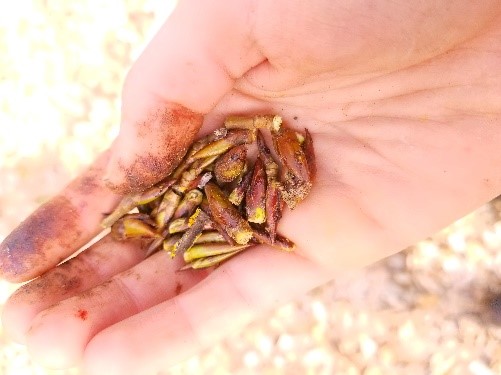
Walking Home…
In making my way back down the mountain, Chicory said hello, the Pine Trees bowed,and I replied in thanksgiving. I had 2 pounds of bark from a recycled fallen tree, and another pound of resinous root to take home and produce at least a gallon of medicine for my family and my clients. How glorious is a gift like thatTo me, it is everything. Minimally extract from the forest, to make a years’worth of remedy all the while praying, and being with the earth and my own heart, feeling it’s fullness… I couldn’t have chosen a better existence for a human such as myself to thrive in.
Home From the Forest
When I got home I began the remedy making process. For this recipe it is a 24-hour process as the fermentation of the cherry bark is essential. Since I am never expecting to find a fallen tree for bark preparations, I am always happy with fermenting the bark overnight in water to soften and begin the releasing of the aromatics and hold them in a safe place.
I have tweaked a couple of recipes that I have learned over the years with this process, one from Matthew Becker who takes the bark of the tree and ferments it in water for 24 hours, he calls it a juice then adds brandy to preserve the juice. I love this method, but also am one who follows Michael Moore’s books like they are bibles. So, my blend of the two, coming from my green herbalist heart, and a lover of fermentation is as follows…
Fermented Choke Cherry Juice
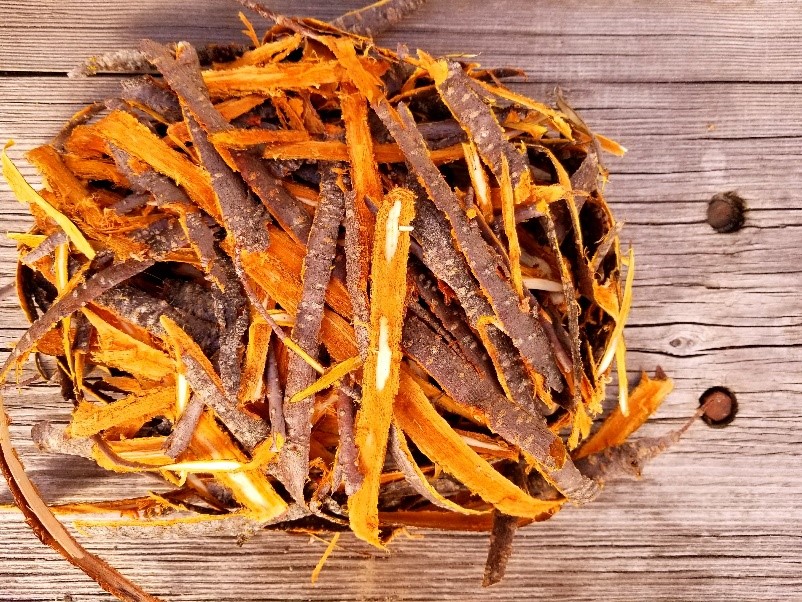
1-2 pounds of Wild Cherry Bark
1 pound of Aaron Leaf Balsam Root
¼ Pound Winter Poplar Buds (or tincture of the buds from previous harvest)
Water, Vodka
Fermenting The Bark
I take a cookie sheet and lay the bark out as flat as I can,it is best to use a heavy lipped cookie sheet, one of those more ‘professional’ bakers ones that is sturdy, and won’t flex, then has a nice pool to soak your bark.
When the bark is flat and happy in the cookie sheet, soak the bark with water. I like to use filtered water from the fridge, so it is nice and cold and nearly fill the cookie sheet, the bark will soak it all up, and will release more of its water by the next morning. Cover this lovely mixture with saran wrap as tight as you can, and place in a sunny south facing window.
This will create a double greenhouse effect and start the cooking process of fermentation. You could probably put it on top of the fridge or hot water tank if there is room, but I like the solar energies added into the mix, and then my bark is soaking along with my herbs and plants who are inside for the winter as well!
Making and Mascerating
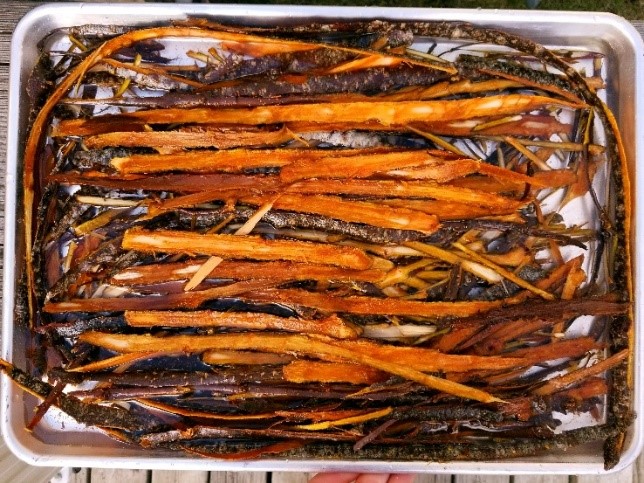
Get your roots prepped by cutting and sorting them now, so they are all ready to roll the next day into jars.
After 24 hours of fermenting, pour out the juice into a Pyrex measuring jug then divide the bark into 4 jars, quarter pound per quart mason jar. Add your quarter pound of Balsam root and poplar buds evenly dispersed to each of the 4-quart jars.
When your herb is stuffed into the jar divide the juice evenly 4 ways. This time I got 6 cups of liquid from my bark, so each jar got 1 and ½cups of bark juice, then I topped it all off with vodka. Secured the lid and macerated for the first time of many over the next few weeks.

The Final Product
This is where I blend Moore and Becker’s recipes. I like to treat it like a tincture after the water ferment bath and let everything soak and marinate for the next few weeks. I will turn some of this goodness into a Syrup and the rest will remain Tincture.
If you feel that there needs to be more alcohol added when the Hydrometer reads lower than 35%, I would just do that, add more Vodka to the mixture until that marker is reached. If you’re more of a purist than I, leave the bark and roots in the jars, add more alcohol and let sit a couple more weeks or until you are satisfied with your reading. This is one of my favorite remedies to make. I am thinking that is because it is the first wild harvest of the year!
zMy fingers get all sorts of muddy and caked with dirt, me callouses are realized again for the first time since fall harvest, and I get to sit on the warm ground of the forest. Between al lthese reasons, I can see why I love this one so much. The smells are coming alive again, and life is about to spring forth, my heart once again, is overflowing with gratitude…
Blessings my friends

